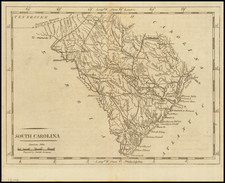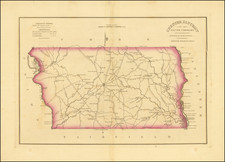South Carolina during the American Revolution: A Glimpse through David Ramsay's Map
In the midst of the American Revolution, South Carolina played a critical role in the fight for independence. The present map from David Ramsay's "The History of the Revolution of South-Carolina, From a British Province to an Independent State," provides a fascinating visual representation of key military events and maneuvers.
General Augustine Prevost's Route (Spring of 1779)
British Brigadier General Augustine Prevost's route between Purrysburg and the Ashley River in the Spring of 1779 captures a significant strategic movement by the British forces. Purrysburg, located on the Savannah River, was originally settled by Swiss Protestants and was a pivotal location due to its proximity to both Georgia and South Carolina.
Prevost's march was part of a broader British strategy to shift the war to the Southern colonies, where they believed Loyalist support was stronger. As Prevost advanced, he aimed to secure key locations and gather Loyalist support. The map notates various British and American encampments along this route, representing key points of conflict and strategic importance.
The culminating event of this march was the Siege of Charleston. Prevost's forces ultimately laid siege to Charleston but failed to capture the city in this attempt. Charleston, located on the Ashley River, was a critical port and symbol of American resistance in the South. It would later fall to the British in 1780, but in 1779, it remained a beacon of hope for the Patriots.
General Greene's March (September 1781)
Nathanael Greene, often referred to as "the Savior of the South," was instrumental in the American strategy in South Carolina. The map's notation of his march in September 1781 is particularly noteworthy.
Greene's overall strategy in the South was one of attrition. Recognizing the logistical challenges the British faced in maintaining a prolonged campaign in the South, Greene engaged in a series of strategic retreats and engagements designed to exhaust the British and stretch their supply lines.
One of the significant battles during this time was the Battle of Eutaw Springs. It was the last major engagement of the war in the Carolinas. Though technically a British tactical victory as they held the battlefield, their losses were so severe that they withdrew to Charleston, effectively ceding control of the South Carolina backcountry to the Patriots.

![South Carolina and Parts Adjacent; Showing The Movements of the American and British Armies [from Ramsey's History of the Revolution in South Carolina] By David Ramsay](https://storage.googleapis.com/raremaps/img/small/83798.jpg)








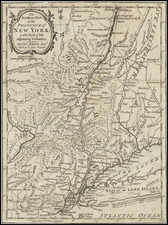
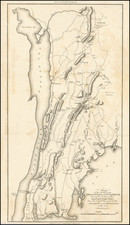
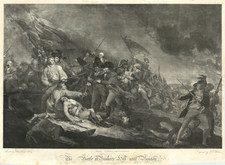
![[Autographs of British Admirals During the American Revolution & War of 1812]](https://storage.googleapis.com/raremaps/img/small/69274.jpg)
